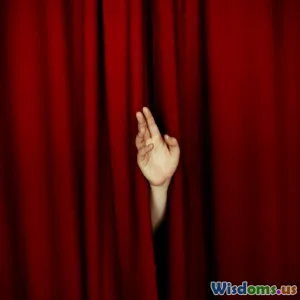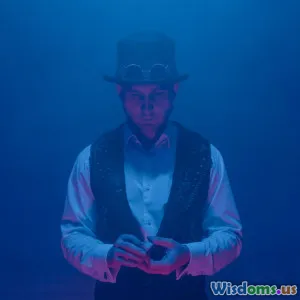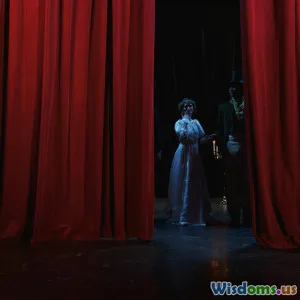
From Houdini to Today How Escapology Continues to Evolve
6 min read Explore the thrilling journey of escapology from Houdini's era to modern innovations in magic and stage performance. (0 Reviews)
From Houdini to Today: How Escapology Continues to Evolve
Introduction
If the name Harry Houdini conjures images of handcuffs snapping free, underwater escapes, and daring death-defying feats, that’s because he truly was the benchmark for escapology — the art of escaping from restraints, confinement, or traps. But escapology didn’t stop with Houdini’s spectacular performances in the early 20th century. Instead, it has continued to evolve, influenced by changing technology, audience expectations, and artistic imagination. Today’s escapologists blend traditional skill with modern innovation to captivate and mystify — proving that this branch of stage magic is as alive as ever.
In this article, we’ll journey through the history of escapology, examining how this mesmerising discipline was shaped by Houdini, and explore the modern innovations that keep the craft fresh, mysterious, and inspiring.
The Golden Era: Houdini’s Foundations
Harry Houdini (born Erik Weisz) was more than just a magician; he was the father of modern escapology. His mastery of locks, chains, handcuffs, and even straitjackets turned escapology into a standalone spectacle.
Signature Acts and Their Influence
- Chinese Water Torture Cell: Houdini’s underwater escape from a locked steel cabinet suspended upside down remains one of the most iconic stunts. It combined timing, physical endurance, and illusion in a way unmatched at the time.
- Handcuff Escapes: Houdini famously challenged local law enforcement worldwide, escaping from police handcuffs that were tested before performances, proving his skill was genuine.
Houdini also integrated storytelling and suspense, creating narratives that drove the audience’s emotional investment. His approach wasn’t just about technical skill but about showmanship — a lesson modern performers continue to embrace.
Realism and Publicity
What set Houdini apart was his commitment to authenticity, often debunking fake spiritualists and exposing fraudulent tricks. His escapes were verifiable, which added credibility and a daring edge. This helped transcended escapology from simple trickery to a bona fide discipline admired worldwide.
The Evolution Through the Decades
Following Houdini’s death in 1926, escapology took different paths, adapting to broader entertainment trends.
Mid-20th Century: From Circus Acts to Television
Escapology became part of variety shows and circus performances. Performers like Joe Burrus and Dorothy Dietrich used elements of illusion alongside classic escapes, blending magic genres.
- Television Impact: The advent of TV popularized televised magic specials, requiring acts to adapt to the camera's eye. Escapes became faster, more visual, and sometimes dangerous, designed to maintain high engagement in a medium where close-up tricks could be scrutinized.
Innovation with Safety and Technology
Advancement in safety mechanisms allowed escapologists to perform riskier feats with reduced danger, such as incorporating quick-release locks controlled by hidden mechanisms. Furthermore, integrating trapdoors and mechanical props lent a theatrical flair, expanding the act’s complexity.
Contemporary Escapology: Tradition Meets Technology
Escapology today fuses Houdini’s principles with cutting-edge technology, psychology, and storytelling. Modern performers continue to push boundaries in creativity and spectacle.
Digital Age and New Mediums
- Virtual and Augmented Reality: Some escape artists now incorporate VR elements, letting audiences experience escapes from immersive perspectives, enhancing engagement.
- Social Media Influence: Platforms like YouTube and TikTok allow performers to showcase quick escapes or behind-the-scenes views, reaching a global audience instantly.
Noteworthy Modern Escapologists
- David Blaine: Famous for endurance stunts like being buried alive and encased in ice, Blaine’s escapology is thrilling because it marries physical endurance and psychological terror, capturing modern audiences’ fascination with realism.
- Criss Angel: Melding rock music aesthetics with magic and escapology, Angel emphasizes spectacle and drama, using pyrotechnics and cinematic effects that escalate the traditional escapology experience.
Incorporating Psychology and Audience Interaction
Contemporary performers use psychological misdirection not only to escape physical restraints but to manipulate audience perception, heightening the tension.
Some shows invite audience participation at an unprecedented level, including selecting escape challenges or attempting to
Rate the Post
User Reviews
Popular Posts




















